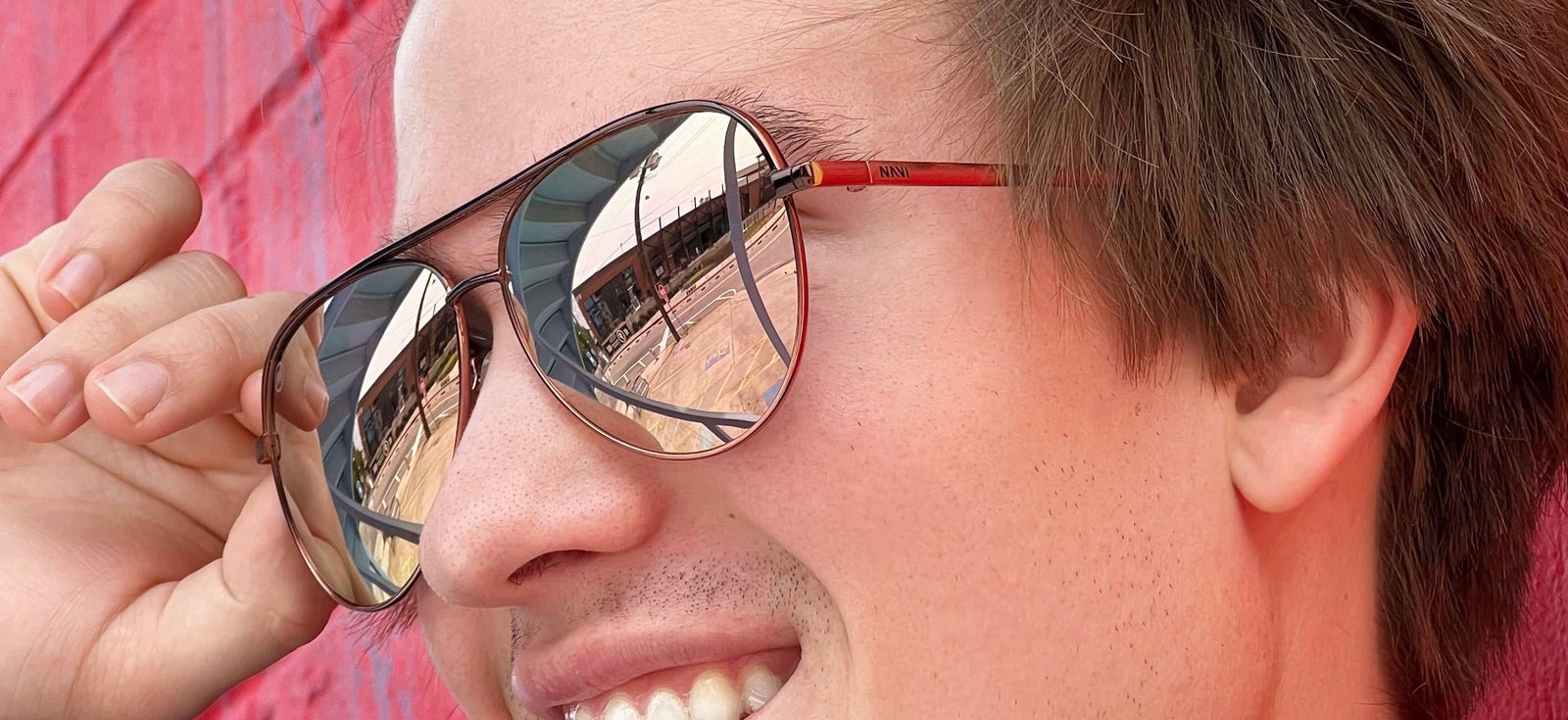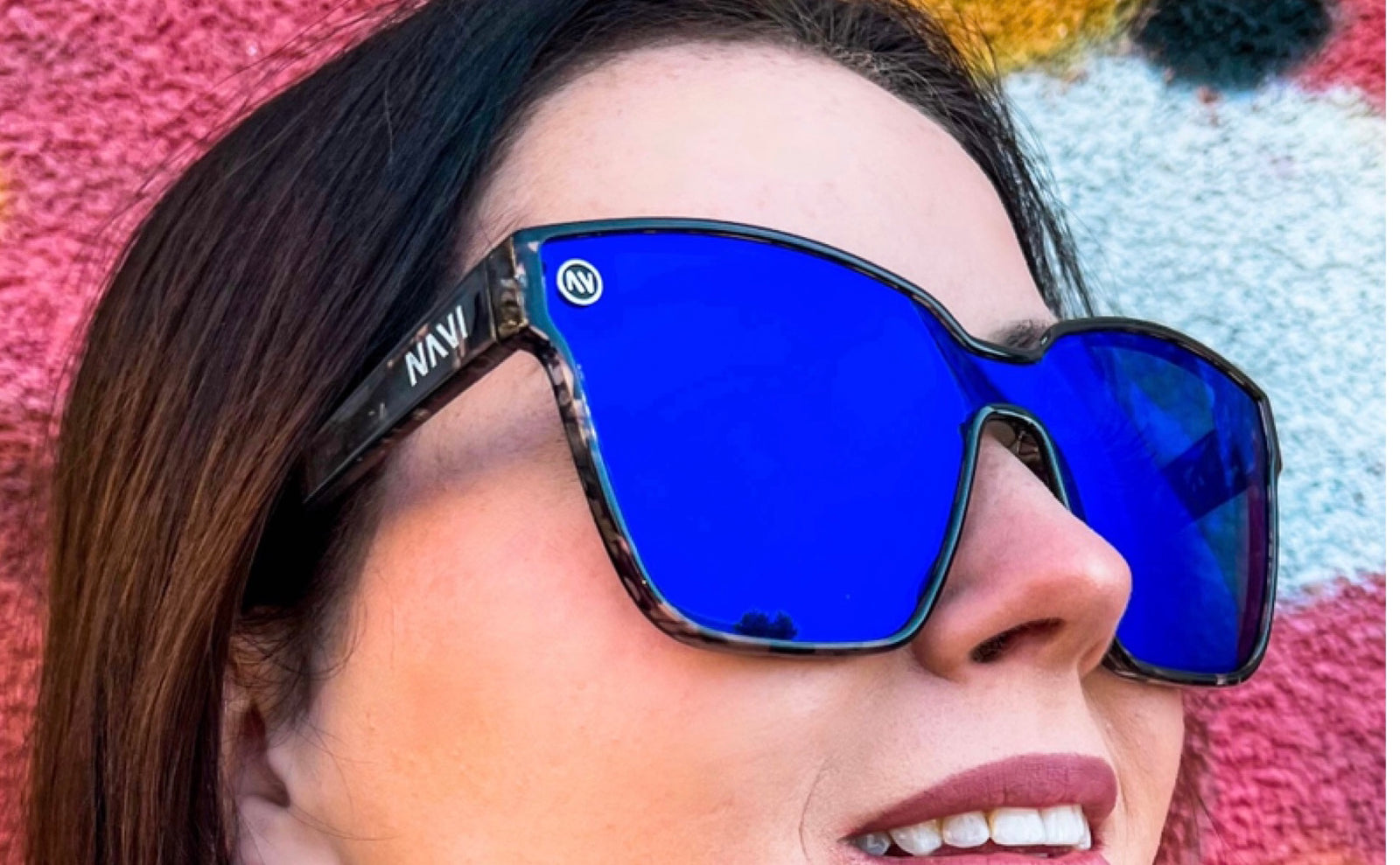Sunglassesare an essential accessory for most people, providing protection from the sun's harmful rays and enhancing visibility in bright conditions. Polarized lenses are a popular choice for sunglasses as they help reduce glare and improve visual clarity. There are several types of polarized lenses available, each with its unique features and benefits. In this article, we'll explore how different types of polarized lenses, such as mirrored, gradient, and photochromic, impact the performance and visual appeal of sunglasses.
Table of Contents
Introduction
What are polarized lenses?
Mirrored lenses
Gradient lenses
Photochromic lenses
Performance of polarized lenses
Visual appeal of polarized lenses Choosing the right polarized lenses
Care and maintenance of polarized lenses Conclusion
FAQs
Introduction
Sunglasses are a popular accessory that not only enhances your fashion statement but also provides protection from harmful UV rays. Polarized lenses are a popular choice for sunglasses as they help to reduce glare and improve visual clarity. However, not all polarized lenses are the same. Different types of polarized lenses offer unique benefits and impact the performance and visual appeal of sunglasses differently. In this article, we'll explore the different types of polarized lenses available and how they impact the performance and visual appeal of sunglasses.
What are polarized lenses?
Polarized lenses are specially designed lenses that reduce glare and improve visual clarity by filtering out horizontal light waves. This helps to enhance contrast, reduce eye strain and improve visual acuity. Polarized lenses are ideal for activities such as driving, fishing, skiing, and water sports, where glare can be a significant problem.
There are three main types of polarized lenses: mirrored, gradient, and photochromic. Let's take a closer look at each type and how they impact the performance and visual appeal of sunglasses.
Mirrored lenses
Mirrored lensesare a popular choice for sunglasses as they provide a unique and stylish look. Mirrored lenses have a reflective coating that reflects light away from the eyes, reducing glare and providing better clarity. Mirrored lenses are available in a range of colors, including gold, silver, blue, and green.
Mirrored lenses are ideal for activities such as water sports, skiing, and snowboarding, where glare can be a significant problem. They are also a popular choice for fashion-conscious individuals who want to make a statement with their sunglasses.
Gradient lenses
Gradient lenses have a gradual tint that is darkest at the top of the lens and gradually becomes lighter towards the bottom. This makes them an excellent choice for activities where there are varying light conditions, such as driving. Gradient lenses provide excellent protection from glare while still allowing you to see clearly in low light conditions.
Gradient lenses are available in a range of colors, including brown, grey, and green. They are a popular choice for fashion-conscious individuals who want to make a statement with their sunglasses.
Photochromic lenses
Photochromic lenses are lenses that change their tint in response to changing light conditions. They are also known as transition lenses or adaptive lenses. Photochromic lenses are ideal for activities where there are varying light conditions, such as driving or cycling. Photochromic lenses are available in a range of colors, including brown, grey, and green. They are a popular choice for people who want a lens that can adapt to changing light conditions and provide excellent protection from glare.
Performance of polarized lenses
All types of polarized lenses offer excellent protection from glare and improve visual clarity. However, the performance of polarized lenses can vary depending on the type of lens and the activity for which they are being used.
Mirrored lensesare ideal for water sports and snow activities where glare can be a significant problem. They provide excellent protection from bright light conditions, reducing eye strain and improving visual acuity. However, they may not be the best choice for driving or other low-light conditions, as the reflective coating may interfere with visibility.
Gradient lenses are an excellent choice for driving and other activities where there are varying light conditions. The gradual tint helps to reduce glare while still allowing you to see clearly in low-light conditions. However, they may not be the best choice for activities where bright light conditions are prevalent, such as water sports or snow activities.
Photochromic lenses are ideal for activities where there are varying light conditions, such as driving or cycling. They can adapt to changing light conditions, providing excellent protection from glare and improving visual clarity. However, they may not be the best choice for activities where the light conditions are very bright or very low, as they may not adjust quickly enough to provide optimal visibility.
Visual appeal of polarized lenses
In addition to their performance benefits, different types of polarized lenses also impact the visual appeal of sunglasses. Mirrored lenses are popular for their unique and stylish look, adding a modern touch to any outfit. Gradient lenses offer a subtle and sophisticated look that is perfect for any occasion. Photochromic lenses offer a classic and timeless look that is both functional and stylish.
The color of the lenses also impacts the visual appeal of sunglasses. Brown and grey lenses offer a neutral and classic look that complements any outfit. Green lenses offer a pop of color that can add a fun and playful element to any outfit. Blue lenses offer a cool and modern look that is perfect for fashion-conscious individuals.
Choosing the right polarized lenses
When choosing the right polarized lenses for your sunglasses, consider the activity for which you will be using them, the light conditions, and your personal style preferences.
Mirrored lenses are ideal for water sports and snow activities, while gradient lenses are perfect for driving and other activities with varying light conditions. Photochromic lenses are an excellent choice for activities with changing light conditions.
Consider the color of the lenses as well, choosing a color that complements your personal style and outfits. Brown and grey lenses offer a classic look, while green and blue lenses offer a more modern and playful look.
Care and maintenance of polarized lenses
To ensure that your polarized lenses perform at their best, it's essential to take care of them properly. Avoid touching the lenses with your fingers, as this can leave oils and smudges that can affect visibility. Instead, use a microfiber cloth to clean the lenses.
Avoid using harsh chemicals or abrasive materials to clean your lenses, as this can scratch the surface and damage the polarizing layer. Instead, use a mild soap solution or a lens cleaning spray designed for polarized lenses.
Store your sunglassesin a protective case when not in use to prevent scratches and damage to the lenses. Avoid leaving them in hot or humid environments, as this can damage the lenses and frame.
Conclusion
Polarized lenses are an excellent choice for sunglasses, providing protection from glare and improving visual clarity. Different types of polarized lenses offer unique benefits and impact the performance and visual appeal of sunglasses differently. Consider the activity for which you will be using your sunglasses, the light conditions, and your personal style preferences when choosing the right polarized lenses for your sunglasses.
FAQs
Can polarized lenses be used for indoor activities?
Polarizedlenses are designed to reduce glare and improve visual clarity in bright light conditions. They may not be necessary for indoor activities, as there is usually no significant glare to reduce.
Are polarized lenses more expensive than non-polarized lenses?
Polarized lenses may be slightly more expensive than non-polarized lenses due to the additional technology and materials used to create the polarizing layer. However, the benefits of polarized lenses in reducing glare and improving visual clarity may outweigh the additional cost.
Can I wear polarized lenses while driving?
Yes, polarized lenses are an excellent choice for driving, as they reduce glare from the sun, headlights, and other reflective surfaces, improving visibility and reducing eye strain.
How do I know if my sunglasses have polarized lenses?
Look for the "P" mark on the lenses or packaging, which indicates that the lenses are polarized. You can also hold the sunglasses up to a reflective surface, such as a car window or water, and rotate them. If the glare decreases as you rotate the glasses, then they are likely polarized.
Can I use a regular cloth to clean my polarized lenses?
No, it's best to use a microfiber cloth to clean polarized lenses. Regular cloths may leave oils and smudges that can affect visibility, while abrasive materials can scratch the surface of the lenses and damage the polarizing layer.
Special Lifetime Offer
Don't forget to take advantage of our special offer at Navi Eyewearfor high-quality polarized sunglasses that will protect your eyes and enhance your vision. With a wide range of styles and colors to choose from, you're sure to find the perfect pair of polarized sunglasses for any activity and personal style.




